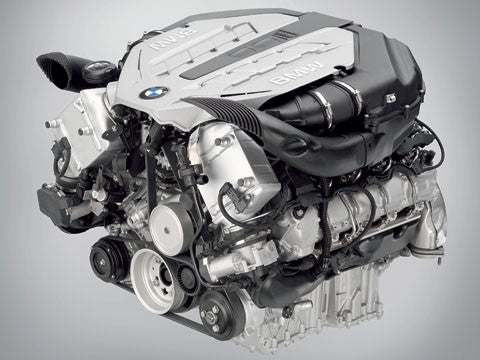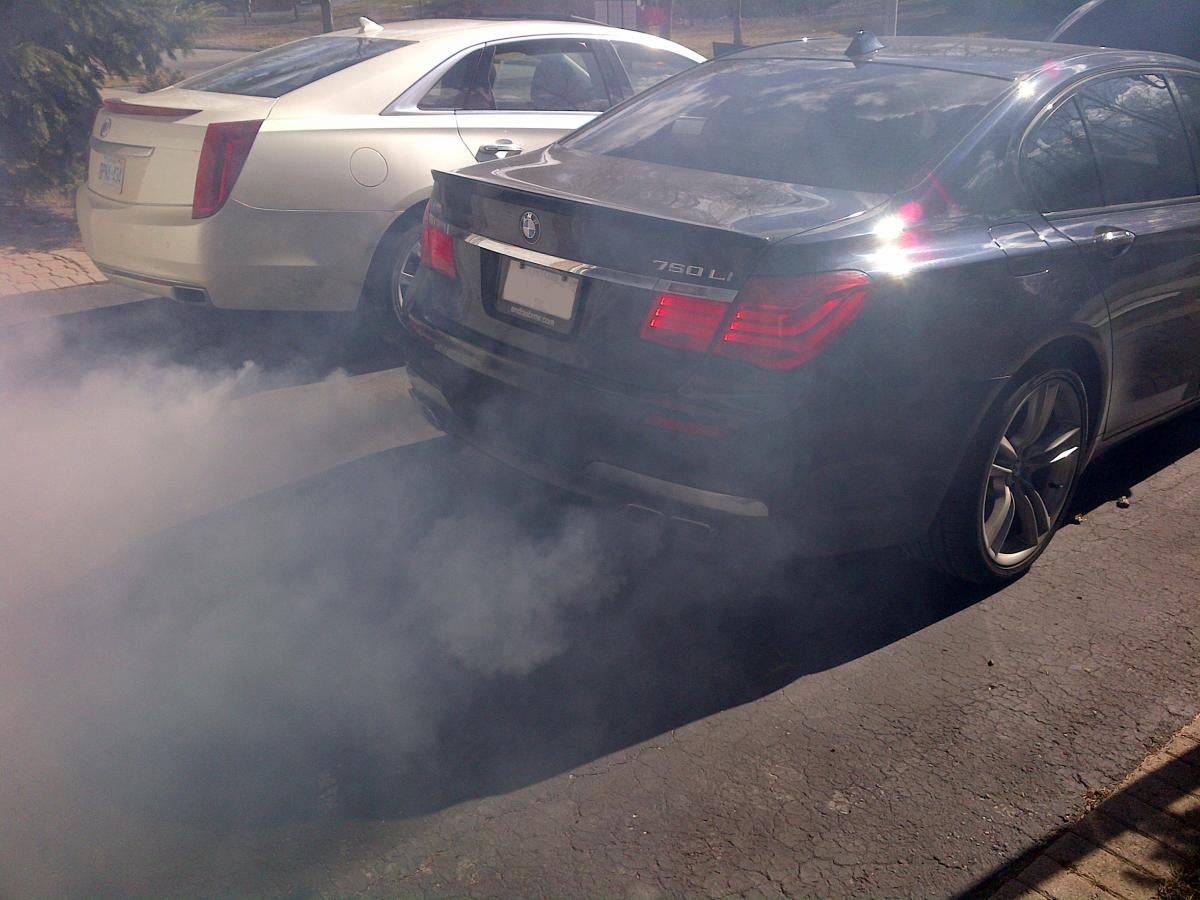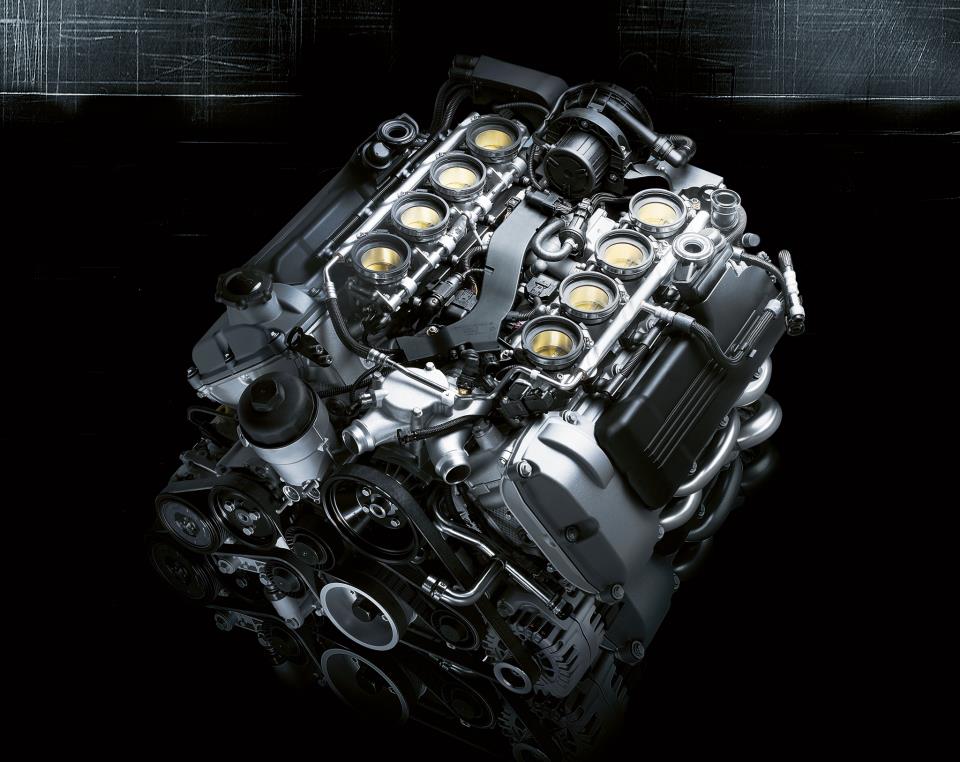 "unclevanos (Ovaltine Jenkins)" (unclevanos)
"unclevanos (Ovaltine Jenkins)" (unclevanos)
05/18/2015 at 16:30 ē Filed to: BMW, German Reliability
 6
6
 11
11
 "unclevanos (Ovaltine Jenkins)" (unclevanos)
"unclevanos (Ovaltine Jenkins)" (unclevanos)
05/18/2015 at 16:30 ē Filed to: BMW, German Reliability |  6 6
|  11 11 |
Ever since the debut of the N62 V8, BMW had held a reputation for unreliable V8s that require sacrificing a 2002tii to cover the repairs and issues associated with them. The current BMW V8, the N63 suffers from a plethora of problems. Some problems include injector failure, timing chain guides (how very M62TU of it), battery replacement every 10k, oil consumption, and valve stems. The issues behind this engine should raise some concern for the folks at Munich. As a person who likes BMW and is a mechanical engineering student, I find these problems unacceptable from a design viewpoint. You the reader might not care what a lanky engineering student might say but Iíll give my two cents anyway. Hopefully with my poor unorganized writing skills, I can demonstrate the issues associated with this engine.

This is the BMW N63, a 4.4 liter direct injected V8 with twin turbos that put down a lot of power that you wonít really use on your commute. Itís a nice idea that BMW went forced induction at a time where few manufacturers offered that. I should have called this article ďWhy Your Engine SucksĒ. The turbos are located in BMWís valley of pan (between the cylinder heads). Valley of pan is an aluminum intensive ecosystem where coolant flows and plastics degrade from the heat of the turbos. I wonder how long that engine cover will last...
The recent failure of the N63 is its appetite for batteries. If this thing were to physically go to a Johnson Controls battery all you can eat buffet, by the second hour they would be out of business. Okay I may have exaggerated on that part but it was for comedic content. With the advent of EfficientDynamics, the N63 has a tendency to discharge batteries. The long term solution with for this is an upgraded agm battery and hope for it to last during each warranty visit. The article below can explain the whole issue.
!!! UNKNOWN CONTENT TYPE !!!
Oil consumption, valve stem failure, timing chain, and injector issues caused a recall to be issued by BMW. Thereís not much information if the engine has improved after the campaign service. The oil consumption and valve steam failure do remind me of the issues the N62 had. Some people blame light footed break in periods and gentle foot driving for the oil consumption. Another factor ignored is the heat these V8s produce. BMW V8s run very hot to meet or exceed emissions. It started when the M62 was introduced and prompted BMW to use buffered water temp gauges. When the N62 rolled around, the temp gauge was eliminated on the cluster. It probably ran at higher temps which probably resulted in the valve stem failure. Heat and elastomers donít get along very well. Rubbers start to degrade with the high heat. Add in the high heat produced by the twin turbos and you have a recipe for dried out valve stems. Others blame the lengthy oil change intervals on valve stem failure but modern day oils have improved intervals than the can of Castrol oil your grandpa used back in the day.

More smoke than a college room dorm
Lastly timing chain issues are not surprising to BMW V8s. The M62TU with Vanos had the issue of chain guides shattering and the chains jumping timing which resulted in bent valves. I canít really jump to conclusions why the N63 had timing chain issues. Unless guides are being shattered. Overall I donít know what compelled BMW to release an engine with so many issues and unproven technology.
 Opposite Locksmith
> unclevanos (Ovaltine Jenkins)
Opposite Locksmith
> unclevanos (Ovaltine Jenkins)
05/18/2015 at 16:37 |
|
Awesome writeup, I've heard of their infamy but I never knew what people's complaints were. Shame, I really liked this engine on paper
 davesaddiction @ opposite-lock.com
> unclevanos (Ovaltine Jenkins)
davesaddiction @ opposite-lock.com
> unclevanos (Ovaltine Jenkins)
05/18/2015 at 16:38 |
|
Glad I got this one.

 AM
> unclevanos (Ovaltine Jenkins)
AM
> unclevanos (Ovaltine Jenkins)
05/18/2015 at 16:41 |
|
Great write up! Also, Iíve heard more bad than good when it comes to the N63 which is sad because on paper itís an awesome engine.
 MultiplaOrgasms
> unclevanos (Ovaltine Jenkins)
MultiplaOrgasms
> unclevanos (Ovaltine Jenkins)
05/18/2015 at 16:42 |
|
Bayrische Motoren Werke in top form.
 Tripper
> davesaddiction @ opposite-lock.com
Tripper
> davesaddiction @ opposite-lock.com
05/18/2015 at 16:43 |
|
No turbos to worry about there!
 davesaddiction @ opposite-lock.com
> Tripper
davesaddiction @ opposite-lock.com
> Tripper
05/18/2015 at 16:48 |
|
And, unlike the engine in the new Z06, it loves to run at the track all day long - ha!
 AMGtech - now with more recalls!
> unclevanos (Ovaltine Jenkins)
AMGtech - now with more recalls!
> unclevanos (Ovaltine Jenkins)
05/18/2015 at 16:51 |
|
Great write up. Thatís the bleeding edge of technology, man! Gotta be first even if shit doesnít work right!
 The Powershift in Steve's '12 Ford Focus killed it's TCM (under warranty!)
> unclevanos (Ovaltine Jenkins)
The Powershift in Steve's '12 Ford Focus killed it's TCM (under warranty!)
> unclevanos (Ovaltine Jenkins)
05/18/2015 at 17:05 |
|
The only conclusion I can come to is that the design of the N63 was completed before the issues with the N62 cropped up. An alternative is that the N63 was programmed as a minor design update, so there was considerable pressure on the engineers to retain existing parts or minimally change what parts had to be changed for cost/time savings.
Either situation suggests an inadequate testing program and/or a significant disconnect between the design engineers and the test and technical support people who work on the product in the field. While the issues with turbos in the valley of the engine block might not have been fully understood by the designers on the first go around, feedback from the test engineers or factory techs in the field should have prompted a review of design requirements and material standards back in the design department.
 MultiplaOrgasms
> davesaddiction @ opposite-lock.com
MultiplaOrgasms
> davesaddiction @ opposite-lock.com
05/18/2015 at 17:23 |
|
Oooooh shots fired, meow!
 unclevanos (Ovaltine Jenkins)
> The Powershift in Steve's '12 Ford Focus killed it's TCM (under warranty!)
unclevanos (Ovaltine Jenkins)
> The Powershift in Steve's '12 Ford Focus killed it's TCM (under warranty!)
05/18/2015 at 17:28 |
|
They really didnít do their research on the engine applications. Most of the N63s live in the F (forschung) chassis. With the tight packing of the inline six, no wonder the N63 had to deal with valley turbos. Iíd like to know what they did during the prototype phase and how they didnít encounter these issues. Also the N63 arised from the knowledged gained on the N54 such as direct injection, valvetronic, and turboing. In their infinite wisdom they thought to apply these ideas on a V8 block with reverse exhaust ports.
 The Powershift in Steve's '12 Ford Focus killed it's TCM (under warranty!)
> unclevanos (Ovaltine Jenkins)
The Powershift in Steve's '12 Ford Focus killed it's TCM (under warranty!)
> unclevanos (Ovaltine Jenkins)
05/19/2015 at 08:10 |
|
Looking over the design history of the N62 and N63 on Wikipedia, I didnít realize there was that long a time between the N62 introduction and the N63 succeeding it. They really have no excuse for carrying over the flaws between generations.
I think the valley turbo idea is
really
clever from a packaging efficiency perspective, but the heat issue was challenging. I think one of the first applications for the design was GMís completed-but-never-released 4.5L Duramax diesel, but BMW was the first to actually release it on the market. I wonder if GM had launched the 4.5L if they would have had some of the same issues. Ford also uses valley turbos on their Scorpion 6.7L diesel - I wonder if they have heat-related reliability issues as well.